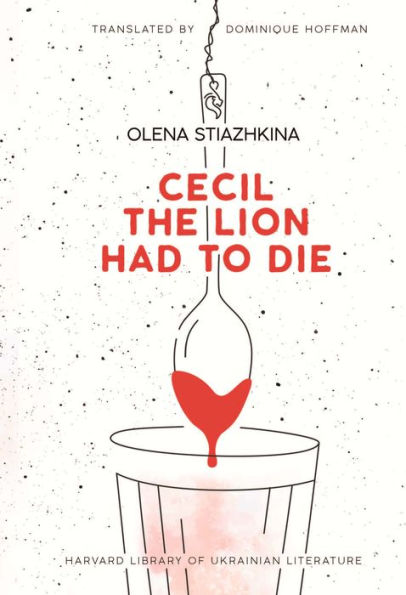In 1986 Soviet Ukraine, two boys and two girls are welcomed into the world in a Donetsk maternity ward. Following a Soviet tradition of naming things after prominent Communist leaders from far away, a local party functionary offers great material benefits for naming children after Ernst Thälmann, the leader of the German Communist Party from 1925 to 1933. The fateful decision is made, and the local newspaper presents the newly born Ernsts and Thälmas in a photo on the front page, forever tying four families together.
In Cecil the Lion Had to Die, Olena Stiazhkina follows these families through radical transformations when the Soviet Union unexpectedly implodes, independent Ukraine emerges, and neoimperial Russia occupies Ukraine’s Crimea and parts of the Donbas. Just as Stiazhkina’s decision to transition to writing in Ukrainian as part of her civic stance—performed in this book that begins in Russian and ends in Ukrainian—the stark choices of family members take them in different directions, presenting a multifaceted and nuanced Donbas.
A tour de force of stylistic registers, intertwining stories, and ironic voices, this novel is a must-read for those who seek deeper understanding of how Ukrainian history and local identity shapes war with Russia.
In 1986 Soviet Ukraine, two boys and two girls are welcomed into the world in a Donetsk maternity ward. Following a Soviet tradition of naming things after prominent Communist leaders from far away, a local party functionary offers great material benefits for naming children after Ernst Thälmann, the leader of the German Communist Party from 1925 to 1933. The fateful decision is made, and the local newspaper presents the newly born Ernsts and Thälmas in a photo on the front page, forever tying four families together.
In Cecil the Lion Had to Die, Olena Stiazhkina follows these families through radical transformations when the Soviet Union unexpectedly implodes, independent Ukraine emerges, and neoimperial Russia occupies Ukraine’s Crimea and parts of the Donbas. Just as Stiazhkina’s decision to transition to writing in Ukrainian as part of her civic stance—performed in this book that begins in Russian and ends in Ukrainian—the stark choices of family members take them in different directions, presenting a multifaceted and nuanced Donbas.
A tour de force of stylistic registers, intertwining stories, and ironic voices, this novel is a must-read for those who seek deeper understanding of how Ukrainian history and local identity shapes war with Russia.

Cecil the Lion Had to Die
200
Cecil the Lion Had to Die
200Related collections and offers

Product Details
| ISBN-13: | 9780674291676 |
|---|---|
| Publisher: | Harvard University Press |
| Publication date: | 09/03/2024 |
| Series: | Harvard Library of Ukrainian Literature , #11 |
| Sold by: | Barnes & Noble |
| Format: | eBook |
| Pages: | 200 |
| File size: | 1 MB |
